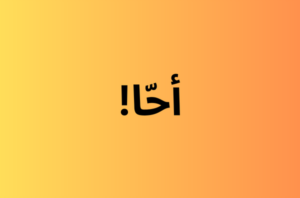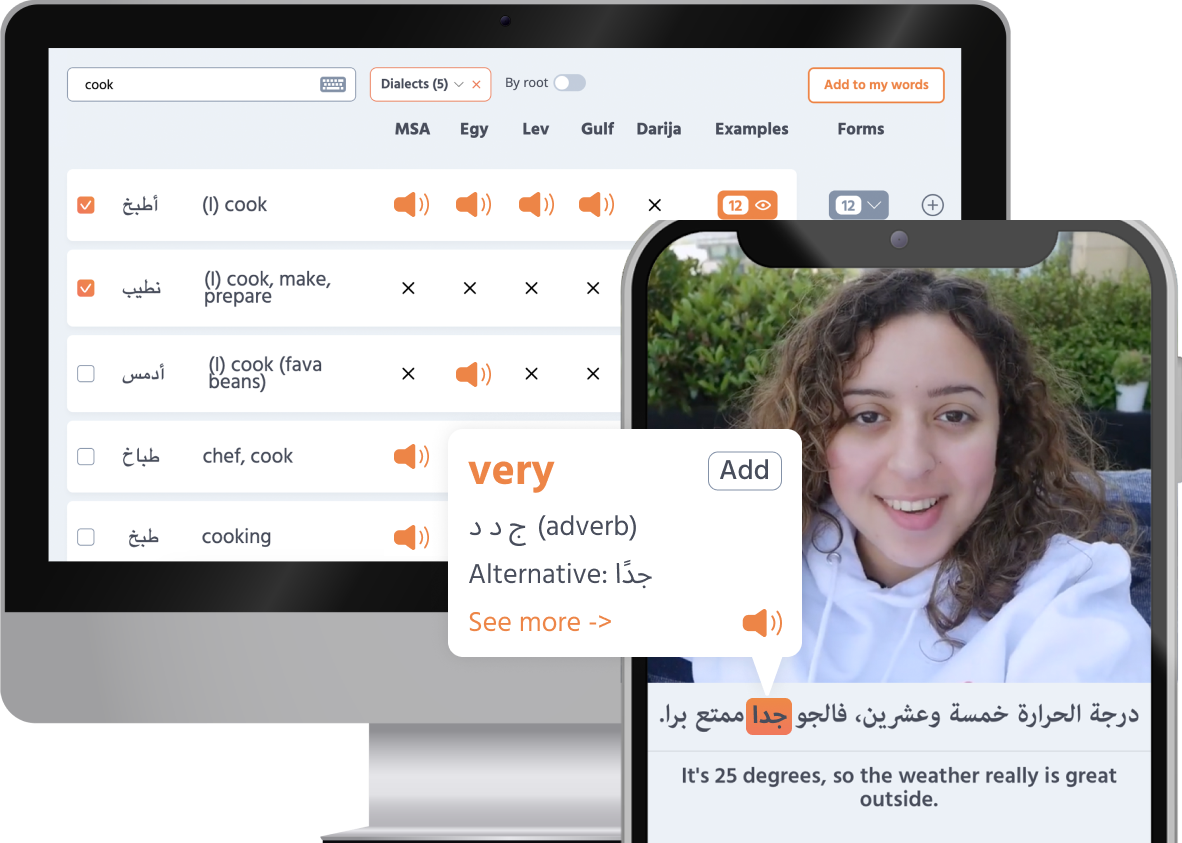Some people tend to think these languages are somewhat similar, with speakers of one being able to understand speakers of the other. But how similar are they, really ? Answer: not much.
Differences between Arabic and Persian Arabic and Persian differ in several aspects beyond their shared script. Here, we outline the differences between these two languages across various aspects.
Historical context and language families Arabic and Farsi (also known as Persian) come from two different language families, highlighting the difference between Arab and Persian languages. Arabic is a Semitic language related to Hebrew and Aramaic, with deep historical roots in the Arabian Peninsula, and has influenced many other languages due to the spread of Islam . On the other hand, Farsi is part of the Indo-European family , which includes languages like English , Spanish , and Hindi, making it more similar to European languages than to Arabic.
Script and writing system Arguably the most visible similarity between Arabic and Farsi is their script. Both languages use a form of the Arabic script, but Farsi has modified it by adding four letters to accommodate sounds not present in Arabic. These additional letters are:
پ
(pe) – pronounced “p” as in “paper.”
چ
(che) – pronounced “ch” as in “champion.”
ژ
(zhe) – pronounced “s” as in “measure.”
گ
(ge) – pronounced “g” as in “go.”
This adoption of the Arabic script by Farsi dates back to the expansion of Islam into Persia, where the script was adapted to fit the Persian language.
The map above shows the extent of the Abbasid empire in the year 850 CE , incorporating vast swathes of the Middle East and North Africa, including modern day Iran. At this point in time, the heirs of the Umayyad caliphate had established their capital in Baghdad, and conquered many new territories to the East and West. As was common with empire expansion, with new rulers came a new language. In most countries ruled by the caliphate, the local languages eventually gave way to Arabic (such as Coptic, Aramaic and Syriac). However, in Persia, the local language continued to live on, adapting and incorporating new vocabulary from Arabic. In some ways, the flexibility of Farsi in incorporating new words from Arabic may have contributed in part to it remaining the main language in Persia. This contributed to the continuation of rich Persian linguistic heritage, and even now, modern day Farsi speakers can understand poems from the 9th century CE.
Diacritical marks Arabic sometimes uses diacritical marks such as (fatha َ ), (kasra ِ ), (damma ُ) and (sukun ْ) for clarifying pronunciation. These marks guide pronunciation in a language where many words share the same roots but have different meanings, making them essential for both understanding and learning the Arabic language . Typically, they’re used in some education and religious texts, which require precise pronunciation for correct interpretation, but generally omitted in most contexts.
Persian also uses diacritical marks to aid in pronunciation. In Persian, these marks are primarily found in educational or religious texts where accurate pronunciation is crucial for understanding. This limited use highlights their role as a tool mainly for learners and in contexts where clarity of speech is paramount.
Both languages utilize diacritical marks to enhance comprehension, especially in formal or learning environments where the exact pronunciation significantly impacts meaning.
Pronunciation Letter Pronunciation in Arabic Pronunciation in Persian Notes ع
ء
– In Persian, the hamza (ء) is often neglected or omitted from writing, and it is never pronounced. ح
ح & ه represent two distinct sounds in Arabic but pronounced the same in Persian.ه
ذ
(ذ ,ز ,ض, ظ) – In Persian, these letters lose their distinctive sounds in Arabic.ز
ض
ظ
ص
(ث, س, ص) – In Persian, these letters lose their distinctive sounds in Arabic.س
ث
Consonants and vowels Consonants:
Arabic: some consonants can be pronounced without any vowel sound, which is indicated by a special mark (sukun ْ ).Persian: uses a similar system but adapts it according to its own language rules and word formations.
This means while both languages share a common feature, they apply it differently based on how their words are structured.
Vowels:
Arabic: Uses three vowel letters:
Alif (ا)
: Pronounced as ‘aa’
like the ‘a’ in (car)
Waw (و)
: Pronounced as ‘oo’ like the ‘oo’ in (tool)
Ya (ي)
: Pronounced as ‘ee’ like the ‘ee’ in (see)
Persian: Uses the same vowel letters, but drops the two dots from the last one. ā (آ): Pronounced like the ‘a’ in (father)
ū (و): Pronounced like the ‘oo’ in (tool)
ī (ی): Pronounced like the ‘ee’ in (see)
Additionally, Persian includes:
Heh (ه)
at the end of a word can also function to create a long ‘eh’ or ‘aah’ sound depending on the word.
Farsi vs Arabic Arabic and Persian borrow many words from each other . Here are some Arabic words that originate from Persian:
Arabic words of Persian origin
Many Arabic words, whether in Modern Standard Arabic (MSA) or in various dialects—such as Levantine , Egyptian , Gulf , and Darija —originate from Persian. These words are sometimes adapted with slight modifications, like changing one or more letters. Below is a table demonstrating some examples.
Persian Standard Levantine Egyptian Gulf Darija English بازار
X بَازار
بازار
بازار
بازار
bazaar, market بادنجان
باذنجان
باتنجان
بتنجان
باذنجان
بودنجال
eggplant جوراب
جورب
جراب
شراب
شراب
X socks دکان
دكان
دكان
X دكان
X shop بوستان
بستان
بستان
X بستان
X garden, orchard زنجبیل
زنجبيل
زنجبيل
زنجبيل
زنجبيل
X ginger گنج
كنز
كنز
كنز
كنز
كنز
treasure زعفران
زعفران
زعفران
زعفران
زعفران
زعفران
saffron بَخت
X بخت
بخت
X X luck, fortune دفتر
دفتر
دفتر
دفتر
دفتر
دفتر
notebook استاد
أستاذ
أستاذ
أستاذ
أستاذ
أستاذ
teacher, professor بُلّور
بلّور
بلّور
X X X crystal, glass بخشش
X بخشيش
بقشيش
X X tip, gratuity چادرشب
شرشف
شرشف
X X X bed sheet, cover تنبل
X تنبل
تنبل
X X lazy تازه
طازج
طازة
طازة
طازج
X fresh, new کار
X كار
كار
X X work, occupation کوفته
X كفتة
كفتة
كفتة
كفتة
meatball بس
X بس
بس
بس
X enough, sufficient پسته
فستق
فستق
فستق
X X pistachio
Persian words of Arabic origin Persian Standard Levantine Egyptian Gulf Darija English کتاب
كتاب
كتاب
كتاب
كتاب
كتاب
book سلام
X سلام
سلام
سلام
X hello علم
علم
علم
علم
علم
علم
knowledge, science قلم
قلم
قلم
قلم
قلم
قلم
pen قلب
قلب
قلب
قلب
قلب
قلب
heart وقت
وقت
وقت
وقت
وقت
وقت
time حقیقت
حقيقة
حقيقة
حقيقة
حقيقة
حقيقة
truth حکمت
حكمة
حكمة
حكمة
حكمة
حكمة
wisdom حرکت
حركة
حركة
حركة
حركة
حركة
movement نفس
نفس
نفس
نفس
نفس
نفس
self, soul دنیا
دنيا
دنيا
دنيا
دنيا
دنيا
world عمل
عمل
عمل
X عمل
عمل
action, work ایمان
إيمان
إيمان
إيمان
إيمان
إيمان
faith اخلاق
أخلاق
أخلاق
أخلاق
أخلاق
أخلاق
morals, ethics انسان
إنسان
إنسان
إنسان
إنسان
إنسان
human جهاد
جهاد
جهاد
جهاد
جهاد
جهاد
struggle, effort عبادت
عبادة
عبادة
عبادة
عبادة
عبادة
worship
A lot of the Persian loan words to Arabic don’t follow the Arabic root pattern. This can be a trick to guessing whether a word is originally Arabic or not.
Here’s a list of classical Arabic words that have been adopted into Persian with minimal modifications:
اثر (Aasār)
Arabic: آثَار
(Aathaar), plural of أَثَر
(Athar)
Persian: اثر
(Aasaar)
English: Traces or Relics
آهَاد (Aahad)
Arabic: آحَاد
(Aahad)
Persian: آهَاد
(Aahaad)
English: Individuals
آفَاغ (Aafagh)
Arabic: آفاق
(Aafaq)
Persian: آفاغ
(Aafaagh)
English: Horizons
خَاتِمَهْ (Khatimah)
Arabic: خاتمة
(Khatimah)
Persian: خاتمَه
(Khatimah)
English: Conclusion
These interchanges showcase the extent of linguistic interplay and the depth of cultural exchanges between Arabic and Persian over centuries, reflecting how certain Arabic phonetics are altered in Persian pronunciation.
Phonetics and grammar The phonetic systems and grammatical structures of Arabic and Persian are quite different, highlighting the difference between Arabic and Persian. Arabic includes guttural sounds absent in Persian and has a complex root-based grammar. In contrast, Persian grammar is simpler and more similar to that of other Indo-European languages , making it generally easier for speakers of these languages to learn.
Let’s explore some examples that illustrate how derivation and inflection work in both Arabic and Persian, highlighting the differences and similarities between the two:
Arabic Derivation:
Root كَتَبَ
:
كَتَبَ
(katab) (Past tense verb): meaning “he wrote.”
كَاتِب
(kateb) (Active participle): A person who writes.
مَكْتُوْب
(maktoub) (Passive participle): meaning “written.”
كِتَابَة
(kitaba) (verbal noun): The process or act of writing.
Patterns and forms are used to change meanings of words and to create new words from the same three letter root.
Inflection:
Verb دَرَسَ
:
يَدْرُسُ
(yadros) (Present tense): Indicates engaging in studying currently.
درَسْتُ
(darasto)(Past tense, first person singular): Indicates that I studied.
دُرِسَ
(doresa)(Passive voice): Indicates that it was studied.
Inflection involves changes in tenses, persons, and voices.
Persian Derivation:
The Persian word for “friend” is “dust” (دُوْسْتْ)
.
To express the concept of “friendship,” the suffix “-i” (ی) is added, resulting in “dusti” (دُوْسْتِی)
.
This is a common practice in Persian, where suffixes are frequently used to form new vocabulary or change the meanings of words.
Inflection:
The verb “to eat” in Persian is “khordan” (خُوْرْدَنْ)
.
To indicate the present tense, the prefix “mi-” (مِی)
is added, forming “mi-khoram” (مِی خُوْرَمْ)
, which means “I eat.”
The past tense is formed by adding a different suffix, resulting in “khordam” (خوردم)
, meaning “I ate.”
In Persian, changes in tense or the grammatical person are primarily achieved by adding suffixes or prefixes, making it a simpler system compared to Arabic.
Furthermore, in Arabic, the verb normally appears near the beginning of a sentence , and in Modern Standard Arabic, it often (but not always), appears before the subject. Whereas in Persian, the verb is normally found at the end of a grammatical construction .
One way to display the basic structure in English would be:
Arabic: يعيش جون في نيو يورك
Lives John in New York.
Persian: جان در نیویورک زندگی می کند
John in New York lives.
By tracing the echoes linguistic exchanges , we gain a deeper appreciation for the shared history that continues to shape our present and future. Curious about the connections between Arabic and other languages? Then dive into our articles exploring the fascinating links between Arabic and French, Hebrew , English , Spanish , and Italian !
Oh, and by the way… If learning Arabic at your own pace, with fun, real-world videos sounds like your style, then Playaling could be exactly what you’re looking for!
With Playaling, you’ll dive into any major Arabic dialect or MSA. Our diverse range of videos has it all—from everyday conversations and cultural moments to music videos, TV and movie clips, influencer content, news broadcasts, and inspiring talks.
Our interactive captions let you tap any word for instant translations, context, and audio. So, real Arabic content becomes accessible with just a click. Miss something? No problem—rewind and listen as often as you need, or hover over subtitles for quick definitions.
Spot a word you want to learn? Save it to your personalized word set, or dive into curated sets for focused practice and easy review.
Interactive exercises let you dive in and practice what you’ve learned.
Need to look something up? The Audio Dictionary has you covered with clear human pronunciations and real world examples.
It’s a learning experience that keeps you engaged, bringing authentic, real-world Arabic closer to you every step of the way.
Give it a try!









